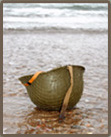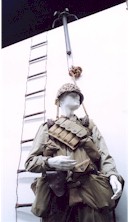D-Day: The Invasion of Normandy |
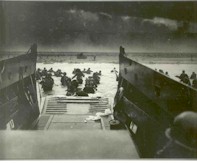 |
Virtually all of the artifacts and equipment in this section were used in the invasion of June 6, notably the grappling hooks and ladder from the Pointe du Hoc, the parachutes and airborne equipment. Two letters are particularly important-one written by Eisenhower, the other by Rommel, both on June 9, to their wives, discussing the invasion and how well it is going. |
|
| |
|
| |
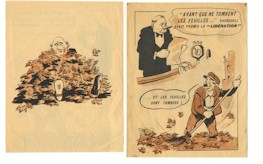 |
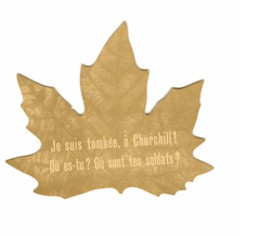 |
German leaflet to the French, mocking Churchill's statement that they would be liberated "before the leaves fall." |
|
| |
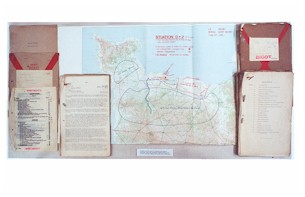 |
The complete set of the plans for Operation Overlord--the Invasion of Normandy. The maps contain the original notations as to precisely where the landings will be made and by which units. An extensive collection of other D-Day invasion plans, including "Neptune", detailing the Allies' aquatic strategy to cross the English Channel for an arrival in Normandy, are in the museum archives. |
|
| |
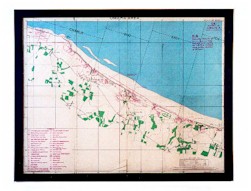 |
Top-secret map of Omaha Beach. |
|
| |
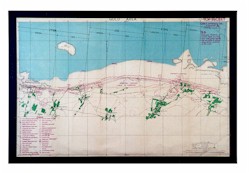 |
 |
Top-secret British landing maps: to the left is "Gold", and "Sword" is on the right. |
|
| |
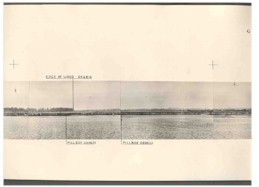 |
A series of photographs of the Normandy coast were taken by submarine and used to familiarize those navigating the landing crafts with coastal landmarks. |
|
| |
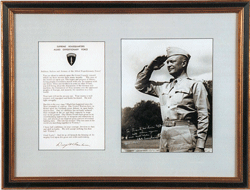 Eisenhower's message to the troops heading to the D-DAY invasion Eisenhower's message to the troops heading to the D-DAY invasion
"Soldiers, Sailors and Airmen of the Allied Expeditionary Force! You are about to embark upon the Great Crusade, toward which we have striven these many months. The eyes of the world are upon you. The hopes and prayers of liberty-loving people everywhere march with you. In company with our brave Allies and brothers-in-arms on other Fronts, you will bring about the destruction of the German war machine, the elimination of Nazi tyranny over the oppressed peoples of Europe, and security for ourselves in a free world. Your task will not be an easy one. Your enemy is well trained, well equipped and battle-hardened. He will fight savagely. But this is the year 1944! Much has happened since the Nazi triumphs of 1940-41. The United Nations have inflicted upon the Germans great defeats, in open battle, man-to-man. Our air offensive has seriously reduced their strength in the air and their capacity to wage war on the ground. Our Home Fronts have given us an overwhelming superiority in weapons and munitions of war, and placed at our disposal great reserves of trained fighting men. The tide has turned! The free men of the world are marching together to Victory! I have full confidence in your courage, devotion to duty and skill in battle. We will accept nothing less than full Victory! Good Luck! and Let us all beseech the blessing of Almighty God upon this great and noble undertaking." |
|
| |
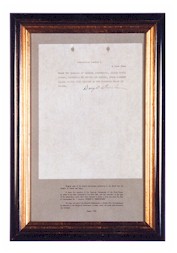 |
"Communique #1". The signed original of Eisenhower's message to the world that the invasion of France had begun. "6 June 1944. Under the command of General Eisenhower, Allied naval forces, supported by strong air forces, began landing Allied armies this morning on the northern coast of France." |
|
| |
 |
Dummy parachutists were used by the Allies to mislead the Germans as to where the airborne assault was being made. They were stuffed with straw and covered with fireworks to simulate gunfire. They did not need to be full-size; when viewed in the air the distance distorted the size. Pictured here is one of the two in the museum that were among a handful discovered in England that were not used on the night of June 5/6. |
|
| |
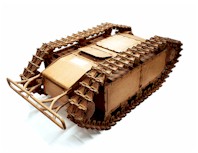 |
This German remote-controlled Goliath tank was filled with explosives and intended to be run up the landing ramps of the landing boats on the Normandy beaches. |
|
| |
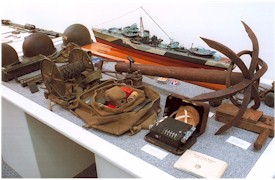 |
Invasion equipment, including grappling hooks fired by the U.S. Rangers to the top of the cliffs at Pointe du Hoc; a wire ladder used on the Pointe du Hoc cliffs and a M-209 code machine used by a British "landing craft-tank rocket" with American naval forces in the invasion of the south of France, 1944. |
|
| |
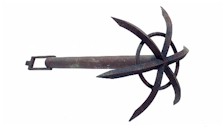 |
Grappling hook used at Pointe du Hoc |
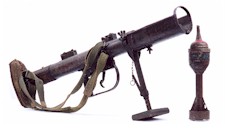 |
PIAT British anti-tank rocket launcher. |
|
| |
 |
Explosives used at Normandy. |
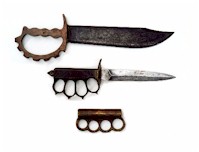 |
Knives and brass knuckles used at Normandy. |
|
| |
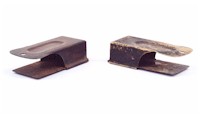 |
"Crickets", used by airborne troops to signal each other during the night of June 5/6. |
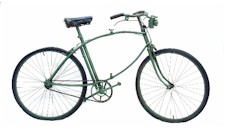 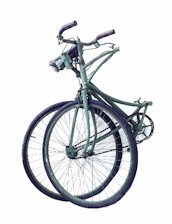 |
British airborne folding bike. |
|
| |
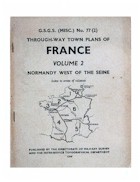 |
U.S. Army guidebook of French towns in the Normandy region. |
 |
British Army supplies used at Normandy. |
|
| |
 |
Propaganda leaflets dropped by German artillery over the Allied landing forces and De Gaulle's announcement of the landings and notices from the French Resistance. The pink document in the lower left is a telegram from the French in London, June 6, arguing about how French liberated territory is to be run: "General de Gaulle has refused to negotiate the problems caused by the landing of the Allied Forces, nor has he authorized missions in charge of administrative connections to be established." |
|
| |
 |
At the bottom is the custom made knife from a Civil War sword blade and regular issue knife carried by Coastguardsman George Murphy during the Normandy landings. The document above the knife is FDR's D-Day prayer with the printed version he had signed for friends for Christmas, 1944. Also pictured at the top are brass knuckles issued to the 101st airborne for the Normandy invasion. |
|
| |
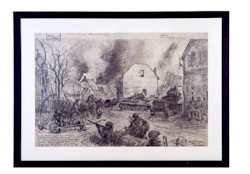 |
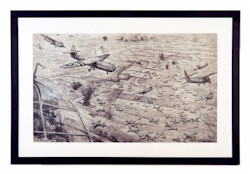 |
Brian de Grinseau drawings of the Americans in Normandy. |
|
| |
 |
Artifacts recovered from Omaha Beach include American and German relics; a Luftwaffe paratrooper helmet taken by an American soldier; and a German helmet recovered from the Falaise Pocket. |
|
| |
 |
Eisenhower and Rommel both wrote letters to their wives on June 9, 1944. These poignant letters--brief but revealing, from both sides of the invasion-- show Eisenhower's positive view of events contrasted with Rommel's negative outlook:
Eisenhower, June 9, 1944: "We've started. Only time will tell how great our success will be- But all that can be done by human effort, intense devotion to duty, and courageous execution, all by thousands & thousands of individuals, will be done by this force. The soldiers, sailors and airmen are indescribable in their élan, courage, determination and fortitude. They inspire me."
Rommel, June 9, 1944: "A lot of hardship has been our lot since our parting, and how much more hardship may still come? We are doing what we can, but the enemy's superiority in nearly all regards is overwhelming. Very bad weather, which is to our advantage. Was in the combat zone the day before yesterday." |
|

